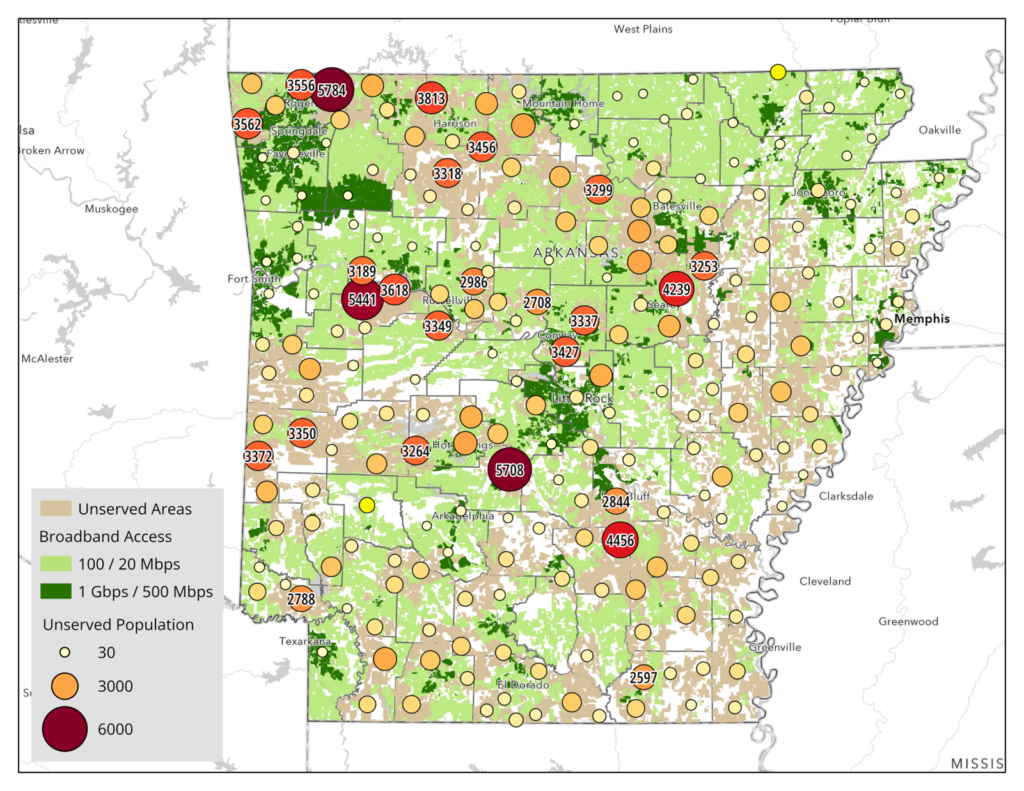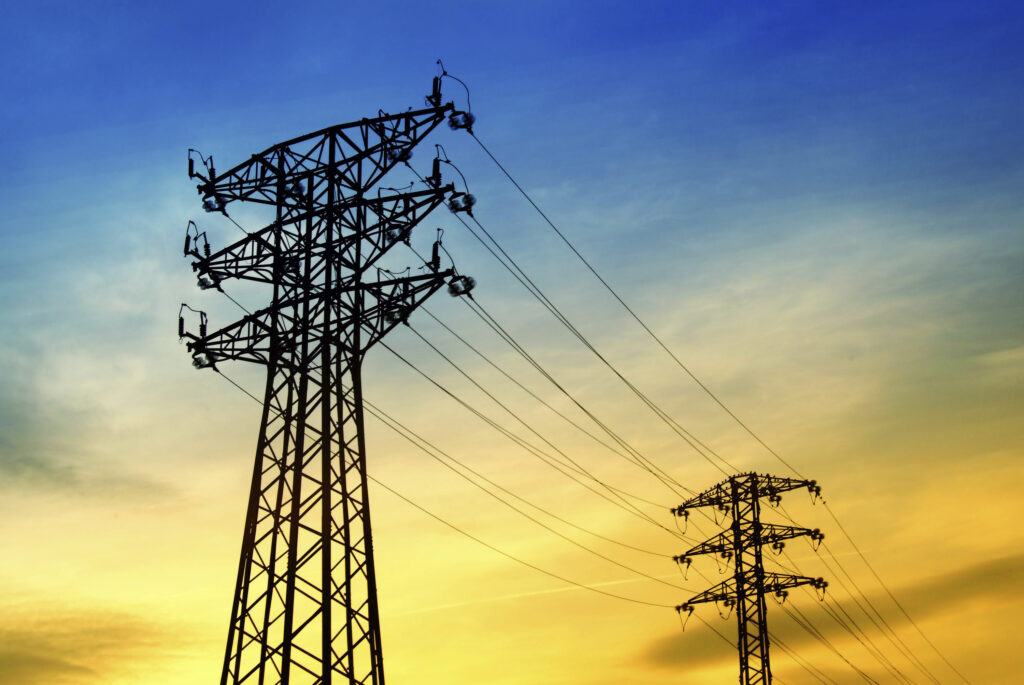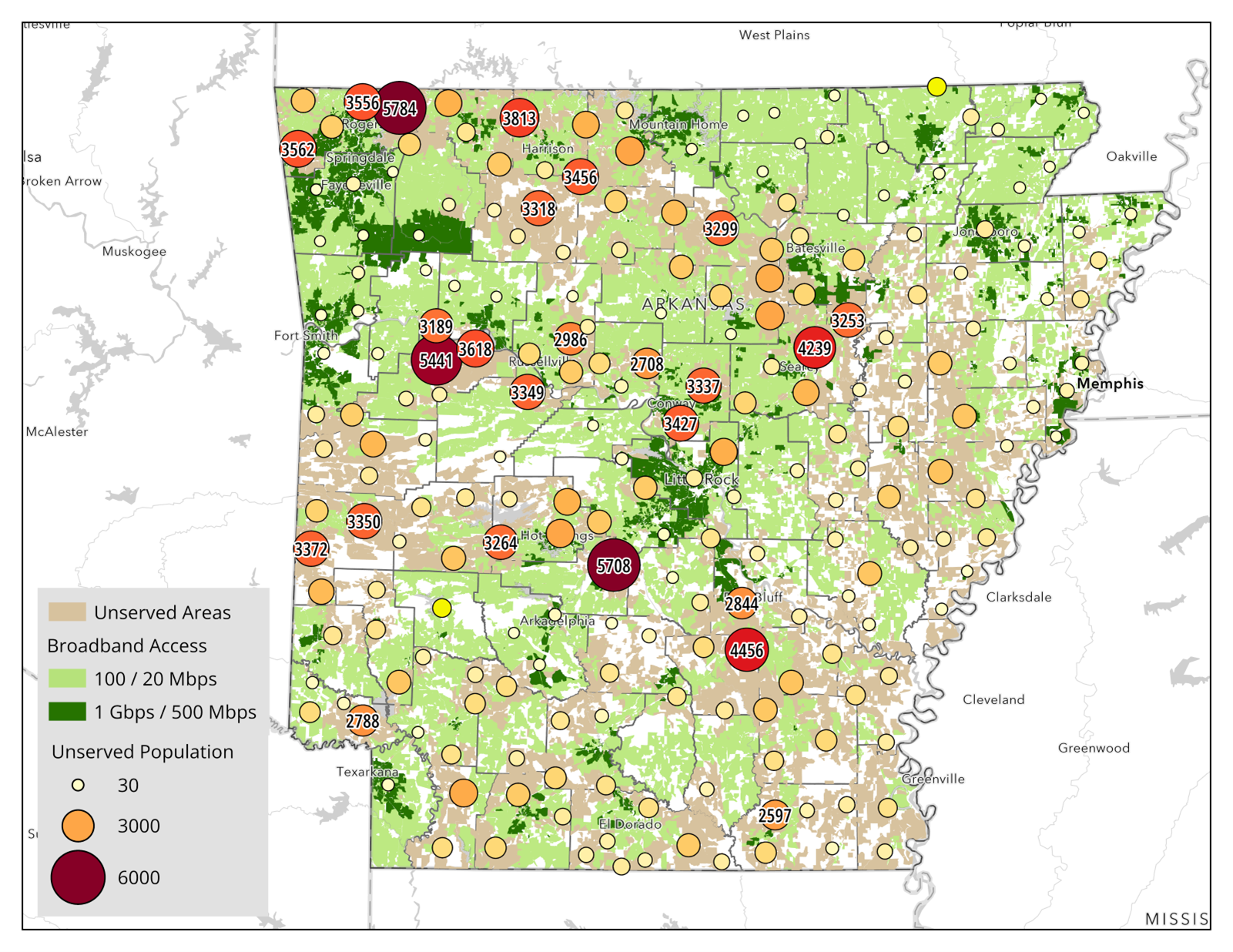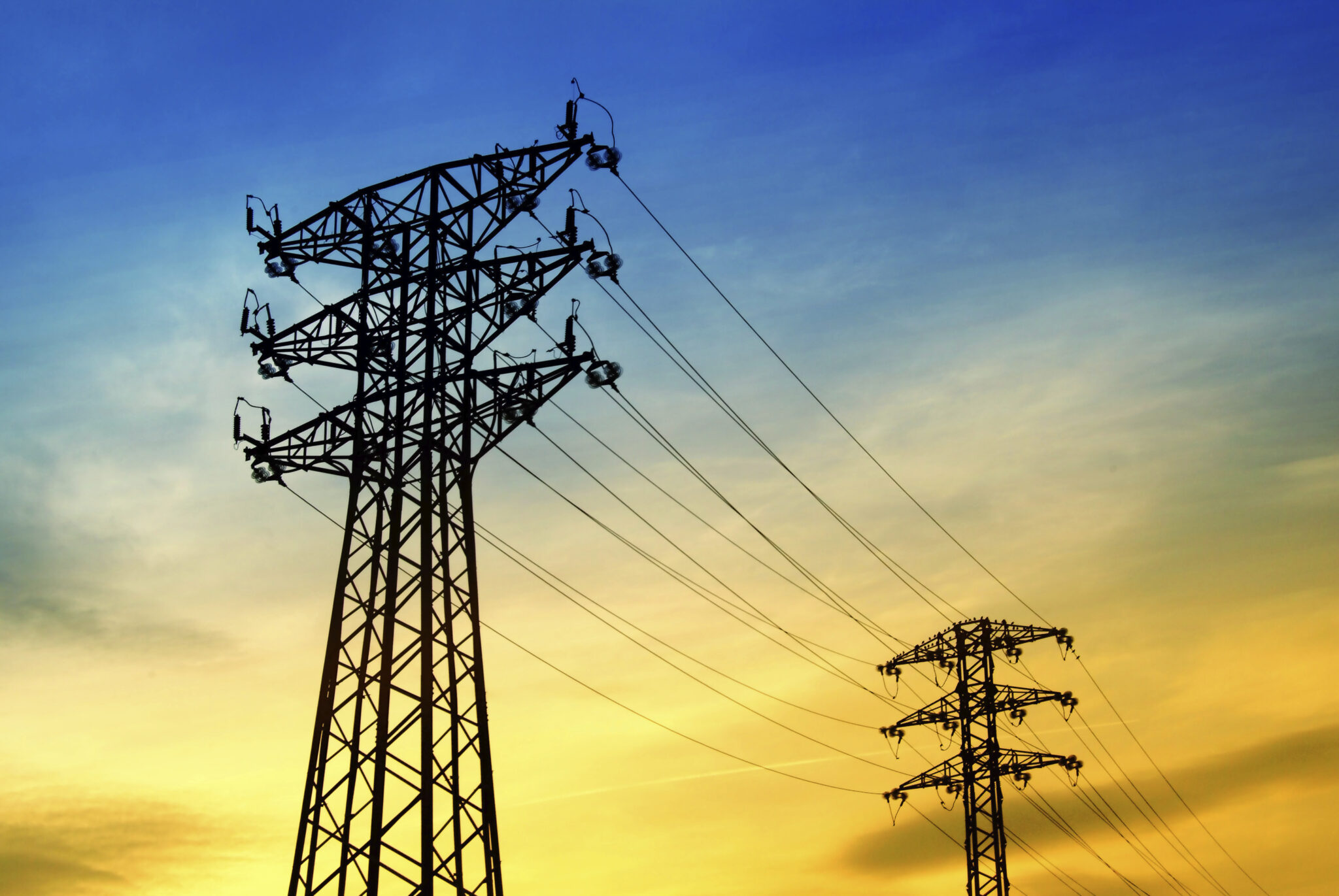Month: March 2024
March Map of the Month
By Grace Parker

Source: Federal Communications Commission
In today’s interconnected world, broadband is not a luxury; it is a necessity. Broadband influences many facets of life, from access to education to employment opportunities and even health. Access to broadband is also critical to monitoring and reducing residential energy use. Many energy technologies, such as smart thermostats and smart meters, require broadband connectivity to function, while most energy assistance programs rely on online applications for aid. Households that have limited access to broadband can find it more difficult to make use of energy efficiency assistance and have fewer tools to monitor and reduce home energy use.
Drawing on data from the Federal Communications Commission (FCC) this month’s map shows the population in Arkansas without high-speed broadband access. Arkansas has about 251,000 households who lack adequate broadband access. At 14.3% of the state’s households, it’s one of the highest rates in the United States. That number increases to 17.4% when you account for those who have access to broadband infrastructure but do not have a subscription, likely because of affordability challenges. This problem extends across the South, with a 2009 report finding that the South had the lowest rate of broadband use and the greatest urban-rural divide.
The FCC defines high-speed broadband as 100/20 megabits per second (Mbps), or 100 Mbps of download speed and 20 Mbps of upload speed. The FCC also set a nationwide goal of 1 Gbps/500 Mbps, which is currently only available in urban parts of Arkansas. This map likely underrepresents the population unserved by high-speed broadband since all the residents of a census block are considered served if anyone within it has access.
The map highlights the difficulty broadband providers face in reaching rural areas, showing how, across the state, there are small, dispersed groups lacking broadband that will require significant investments in infrastructure by providers. Meanwhile, there are larger groups in more populated areas that still lack broadband access, which are more likely to be economical investments for providers.
The lack of high-speed broadband and the energy efficiency measures it enables contribute to a concentrated disadvantage. Nationally, rural energy burdens are 40% higher than those in urban areas. Since most smart energy-saving devices communicate through the home’s broadband, these households have fewer opportunities to monitor and reduce their energy use. Energy assistance information and applications for programs such as the Weatherization Assistance Program (WAP) and utility offerings are often online, making it more challenging for these households to pursue energy efficiency upgrades.
The Department of Commerce is investing over $1 billion in Arkansas and $12.8 billion in the Southeast as part of the “Internet for All” initiative, but some stakeholders and experts have expressed skepticism that this will be sufficient for making broadband universal. Electricity-broadband partnerships are one way to make the funding go further. These partnerships are expanding broadband coverage in the Southeast by sharing infrastructure, making it more cost-effective for broadband providers to reach dispersed populations. These partnerships include investor-owned utilities like Entergy and Alabama Power and many electric cooperatives. Electricity access – which is nearly universal in the United States from an infrastructure standpoint – far outpaces that of broadband, in part due to the work of electric cooperatives created to expand service into rural areas. These intersectional partnerships will be crucial to reaching the rural Southeast.
Tracking Federal Spending in the Southeast and U.S. Territories
Grace Parker

The Infrastructure Investment and Jobs Act, also known as the Bipartisan Infrastructure Law (BIL), passed in November 2021. The law allocates $550 billion in new federal spending over ten years for infrastructure projects, including roads, public transit, broadband, and electric grid upgrades. With so much funding on the table, SEEA is working to ensure funds are distributed equitably across the U.S. and to underserved communities. To this end, SEEA tracked and analyzed where BIL funding has been committed, what it’s being used for, and what type of funding it is. We have published our findings in two new whitepapers, “Investing in the Southeast” and “Investing in the Territories,” with accompanying data dashboards for states and territories.
We found that the Southeast has not received a share of funding proportionate to its population. Nationally, the BIL had committed, on average, $537 per person as of January 22, 2024, compared to just $443 per person in the Southeast. For BIL grant funding, south-central (Texas and Oklahoma) and southeastern states received just $38 and $43 per person, respectively, while northeastern states received $124 per person on average. Southeastern states received funding primarily through formula funds, which are noncompetitive allocations to states and territories based on distribution formulas.
In the U.S. territories, funding for Puerto Rico contrasts starkly with other territories. Given that Puerto Rico has nearly 3.2 million people – twenty times more than Guam, the next most populous territory – it’s not surprising that Puerto Rico receives over nine times more funding than the other territories at over $650 million. However, Puerto Rico still receives a low amount of funding per capita at just $202. Although committed funding in the other territories is less than $100 million each, funding per capita matches or outpaces that of Puerto Rico and many U.S. states, with the Northern Mariana Islands and American Samoa receiving $1,553 and $1,044 per person, respectively. Unlike the Southeast, the U.S. territories receive most of their funding through competitive grants. The greater dependence on grants is notable, given the capacity required to develop competitive grant applications.
While the BIL updates the definition of infrastructure to include critical energy and environmental investments to mitigate climate change, BIL investments have so far been focused on traditional infrastructure like roads and bridges. Ground transportation is the largest category of funding in the BIL, and nearly 75% of BIL funding in the Southeast is for ground transportation. Other key categories include broadband expansion and pollution control. Puerto Rico also received the largest share of funds for ground transportation followed by pollution control and broadband, whereas other territories received most of their funding for pollution control with ground transportation comprising only about a quarter of funding. Energy conservation funding, which is dedicated primarily to the Weatherization Assistance Program (WAP) and State Energy Program (SEP), comprises about 3.1% of committed BIL funding in the Southeast and about 2.4% in the territories.
This analysis is the first installment in an annual review of federal funding, which will help SEEA identify gaps in federal support for the Southeast states and U.S. Island Territories. To see how BIL funding in your state or territory stacks up, check out our associated whitepapers and data dashboards.



